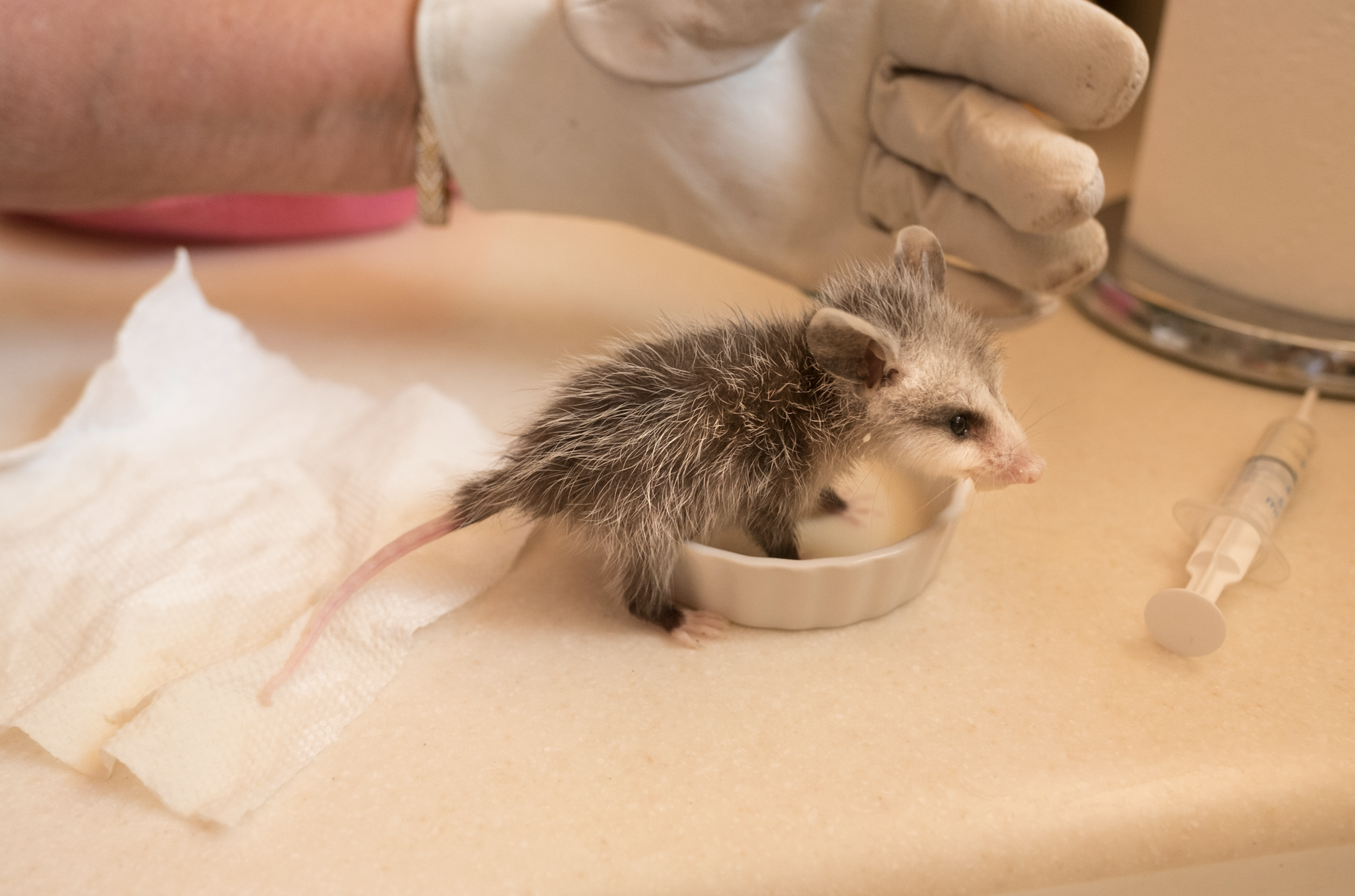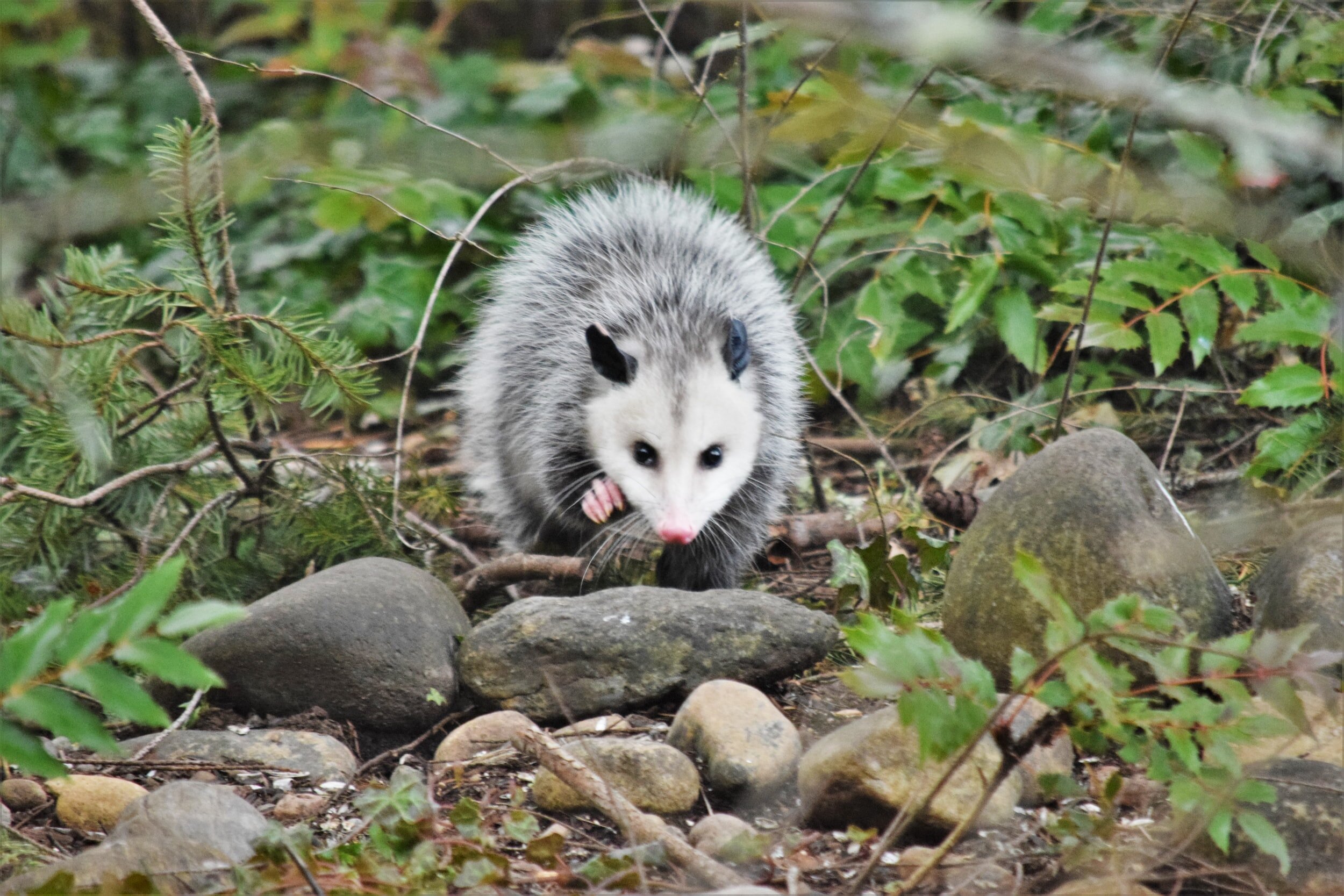
LIVING IN HARMONY WITH OPOSSUMS
GENERAL TIPS:
Do not leave pet food outside.
Do not let your pets outside unsupervised after dark.
Make sure your trash cans have tight lids and are secured so they cannot be knocked over.
Put heavy gauge mesh on vents and openings to prevent denning.
Pick up fallen fruit. Try to pick ripe fruit off of trees.
Do not leave windows or sliding doors without screens open or unattended.
Close garage doors.
Never intentionally feed a wild animal! Feeding wildlife increases human encounters, which endangers animals and harms the ecosystem.
Some opossums may look small, but if they are over 7 inches in length then they are old enough to be on their own. If you think you’ve found a baby opossum, click here.
IF YOU ENCOUNTER AN OPOSSUM, IT MAY:
Hiss
Show its teeth
Drool
Defecate on itself
Play dead
These are simply defense mechanisms. Opossums do not want to cause any trouble with humans.
AN OPOSSUM MAY NEED HELP IF:
It is alone and its body is less than 7 inches long (not including the tail)
It is injured
It is stuck
It appears sick
If you believe an opossum needs help, call the SBWCN Helpline: (805) 681-1080

OPOSSUM FAQ
-
Opossums love ticks! It’s estimated they can consume about 5,000 ticks each season, keeping them out of your backyard. They also eat slugs, beetles, and other insects that typically are destructive to your garden.
-
Visit the baby mammal page for more information.
-
This is not an indication that the animal is unwell, it could be a mother taking a break from her babies to find food or rest a little. Winter and Spring represent mating months for animals, meaning an increase in activity during the day. If an animal appears alert and active, it is best to leave them alone.
Many seemingly nocturnal animals, like skunks, opossums, and coyotes, are crepuscular, meaning they are most active at dawn and dusk. It is completely normal to see them at these times.
If you believe animal is sick or injured, call the Helpline: (805) 681-1080
-
Get a box large enough to safely hold the animal.
Make sure the box has plenty of small air holes.
Place something soft at the bottom of the box.
Gently place the animal in the box (Wear leather gloves) or shepherd the opossum into the box with a broom.
Keep the box warm, dark, quiet, and away from children and pets.
Do not place any food or water in the box.
Do not peek! The animal is very stressed.
Bring the animal in the box to SBWCN at 1460 N. Fairview Ave., Goleta, CA 93117.
-
- Change your trash day habits. Place your trash outside the morning of pick-up instead of the night before. Double-bag your trash. Place your bags inside of a trash bin. Secure trash bin lids with a bungee cord or place a weight on top.
- Properly store your trash bins. Place them in a protected area or secure them to your home or garage. Place them on level ground where they cannot be tipped over as easily. Place them in the line of sight of a spotlight or motion-detecting light.
- Use animal repellent. Repellents use scent, taste, or a combination of both to drive animals away from the protected area. Sprinkle granular animal repellent around the area where trash cans are stored. Additionally, spray a liquid animal repellent directly onto trash bags, trash cans, or recycling bins as you place them curb-side. Humane options include cayenne pepper, Critter Ridder, and Shake-away.
-
Live-trapping and relocation is inhumane. If animals are introduced into areas they are unfamiliar with, they do not know where food, water, or shelter sources are. There may be other animals in the area that have diseases to which the introduced animal has never been exposed. The introduced animal may be encroaching on another's territory.
Trapping is only a temporary solution. The reasons animals are visiting your property must be addressed before they stop visiting. If you get rid of one, another will simply take its place.
Traps often do not catch the intended targets. Other animals, including pets, are just as likely to enter traps. Animals caught in traps often injure themselves trying to escape.
